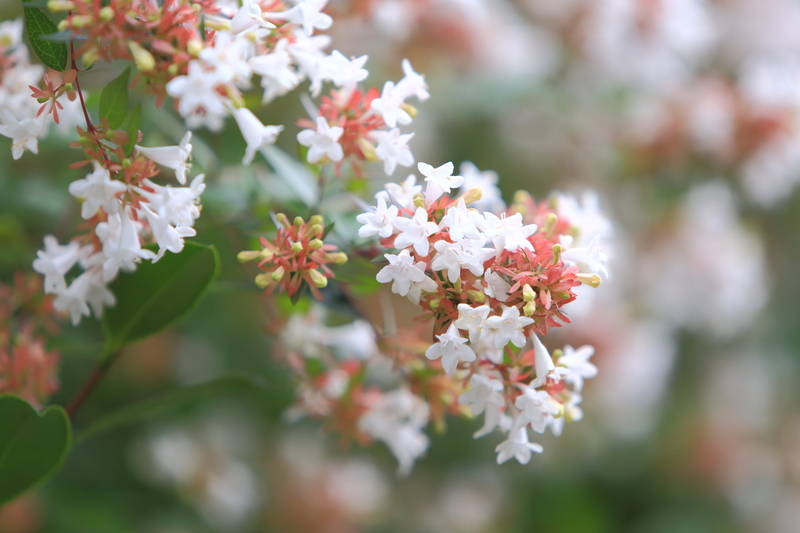Tips for Maintaining Your Garden in Severe Weather
Posted on 20/08/2025
Tips for Maintaining Your Garden in Severe Weather
Gardening brings joy and satisfaction to millions of homeowners, but maintaining a thriving garden isn't always easy--especially when Mother Nature decides to unleash her harshest elements. Whether you face scorching heatwaves, relentless winds, torrential rain, storms, or frost, protecting your landscape is critical for its long-term vitality. In this comprehensive article, we explore expert tips for maintaining your garden during severe weather conditions and help ensure your plants, flowers, shrubs, and trees bounce back stronger than ever.
Understanding the Impact of Severe Weather on Your Garden
Before diving into strategies, it's crucial to grasp how extreme weather affects gardens. Severe weather can damage plants, erode soil, flood garden beds, or trigger pest outbreaks. Identifying potential threats is the first step toward effective garden protection and weather-resilient landscaping.
- High Winds: Break branches, uproot trees and scatter debris.
- Heavy Rain: Causes flooding, root rot, soil erosion, and fungal diseases.
- Heatwaves & Drought: Stress plants, dry out soil, and increase water needs.
- Frost & Snow: Damage delicate plants and cause rapid wilting or death.
- Hail: Can shred leaves and damage stems or flowers.

Proven Tips for Maintaining Your Garden in Severe Weather
Let's look at detailed, actionable tips to help you protect your beloved garden during extreme conditions.
1. Choose Weather-Resilient Plants
Selecting the right plants forms the foundation for a durable garden. Native plants and those adapted to your climate are naturally equipped to survive local extremes.
- Research which plants are best suited for your region's typical weather, including temperature extremes and seasonal rainfall.
- Consider drought-tolerant varieties like lavender or succulents in hot, dry areas.
- Plant hardy perennials and resilient shrubs that can handle cold snaps.
- Opt for deep-rooted species, which better withstand wind and water fluctuation.
2. Enhance Soil Health
Healthy soil is a garden's best defense against severe weather. It retains moisture during droughts, drains excess water during storms, and supports strong root systems.
- Regularly amend soil with compost, aged manure, and organic matter to boost structure and fertility.
- Add mulch around plants to stabilize temperature, conserve moisture, and prevent erosion.
- Use cover crops in fall and winter to enrich soil and protect against heavy rain or snow.
3. Mulch for Moisture Control and Insulation
Applying a mulch layer around plants isn't just for appearances--it's essential during weather extremes.
- Retain moisture: Mulch slows evaporation, keeping roots hydrated during droughts.
- Insulate soil: A thick layer protects roots from temperature swings, including heat and frost.
- Reduce erosion: Acts as a barrier, preventing soil from washing away in heavy rain.
- Use organic mulches (bark chips, straw, shredded leaves) or inorganic materials (gravel, landscape fabric) depending on your needs.
4. Create Windbreaks and Shelterbelts
High winds can snap stems and strip foliage. Shield your garden with windbreaks such as:
- Hedges or dense shrubs: Plant a living wall to deflect wind and reduce speed.
- Fences and trellises: Install sturdy fencing or vertical supports where exposure is highest.
- Strategic tree planting: Rows of evergreen trees or bamboo can protect sensitive areas year-round.
Remember, windbreaks not only minimize wind damage but also help moderate temperatures and reduce water loss by lowering evaporation rates.
5. Implement Smart Watering Practices
Drought and excessive rain both challenge the gardener. Efficient watering systems help maintain balance:
- Install drip irrigation to deliver water directly to roots, reducing evaporation and runoff.
- Water early in the morning or late in the evening to minimize waste from heat.
- During heavy rainfall, avoid overwatering and monitor for standing water or soggy conditions.
- Consider rain barrels to harvest and reuse rainwater during dry spells.
6. Ensure Proper Drainage
Poor drainage can lead to root rot and plant suffocation during storms. Improve garden drainage by:
- Raising beds: Use elevated or mounded beds, especially in clay-heavy soils.
- Adding organic matter: Compost and sand can help heavy soils drain faster.
- Creating swales: Shallow channels direct water run-off away from vulnerable plants.
- Install French drains or perforated pipes for larger landscapes with persistent water issues.
7. Prune and Inspect Before Storms
Prior to forecasted storms, perform preventive pruning and inspection:
- Remove weak, dead, or diseased branches that could break or become hazardous.
- Thin the canopy of dense trees to reduce wind resistance.
- Tie or stake young trees and tall plants to support them during strong winds.
- Check garden structures (trellises, arbors, fencing) and secure as necessary.
8. Protect Delicate Plants During Extremes
For sensitive plants, a little extra care goes a long way.
- Frost blankets or cloches: Cover tender annuals or tropicals during cold snaps.
- Shade cloth: Use during heatwaves to shield plants from direct sun.
- Move potted plants to sheltered spots (under eaves, patios, or indoors as needed).
- Mulch heavily around roots to buffer temperature swings.
9. Monitor and Support After Severe Weather Events
Post-storm care is vital for garden recovery.
- Inspect for broken stems, exposed roots, and disease symptoms.
- Replant dislodged plants and stake or tie where needed.
- Remove debris that can harbor pests or block sunlight.
- Feed plants with diluted fertilizer to aid their return to health.
10. Adapt Your Garden Design for Resilience
Sometimes, the best solution is to redesign your garden for greater resilience:
- Use raised beds or containers for added control over soil and drainage.
- Cluster plants with similar water and sunlight requirements to streamline care.
- Incorporate permeable paving and rain gardens to manage stormwater run-off.
- Segment your garden into microclimates, e.g., using sun traps or shaded areas for vulnerable species.
Special Considerations for Different Types of Severe Weather
Maintaining Your Garden During Drought and Heatwaves
- Prioritize watering of vulnerable or newly planted specimens first.
- Reduce lawn mowing to allow grass to grow longer, shading soil and reducing moisture loss.
- Avoid fertilizer during high heat; focus on mulching and shade.
- Consider xeriscaping--designing landscapes to reduce water use.
Protecting Gardens During Heavy Rain and Flooding
- Clear gutters, drains and ditches of debris before storms hit.
- Temporarily cover vulnerable areas with tarps if flooding is imminent.
- After flooding, check for root rot, and sprinkle lime to neutralize overly acidic, waterlogged soils.
Mastering Frost and Freeze Events
- Water plants before a freeze; moist soil holds heat longer than dry.
- Wrap tree trunks with burlap or bubble wrap to prevent cracking.
- Group pots and containers together in sheltered locations for added warmth.
Essential Garden Maintenance Tools for Severe Weather
Investing in the right garden maintenance tools can save time and protect your hard work during tough seasons:
- Pruners and loppers for removing damaged growth quickly.
- Spades and shovels for soil improvement and replanting.
- Stakes, ties, and netting for securing plants.
- Heavy-duty gardening gloves and boots for safe clean-up after storms.
- Wheelbarrow or garden cart for hauling mulch, debris, or soil amendments.

FAQs: Weatherproofing Your Garden
What are the first steps to take before severe weather arrives?
- Move fragile potted plants to safe locations.
- Stake vulnerable trees or shrubs.
- Check all support structures and secure them.
- Apply mulch, and make sure downspouts and drains are functioning.
Can I garden during the off-season for extra protection?
Yes! Winter gardening or off-season planning--including mulching, soil improvement, and planting cover crops--dramatically increases your garden's resistance to weather stress.
What should I avoid doing during extreme weather?
- Don't fertilize during drought or heatwaves--it can burn plants.
- Don't walk on saturated soil, as it can become compacted and damage roots.
- Never prune heavily in frost--they need their growth for winter protection.
Conclusion: Creating a Weather-Resistant Garden
Maintaining your garden during severe weather is both a science and an art. By selecting climate-appropriate plants, improving your soil, establishing protective barriers, and staying proactive with routine care, your garden can flourish even after the harshest storms. Remember, resilient gardens are not born overnight--regular investment in preparation and maintenance is key. Stay informed about your local climate, adapt as needed, and watch your outdoor oasis thrive no matter what the forecast brings.
For more garden maintenance tips in extreme weather or to share your own success stories, leave a comment below!

